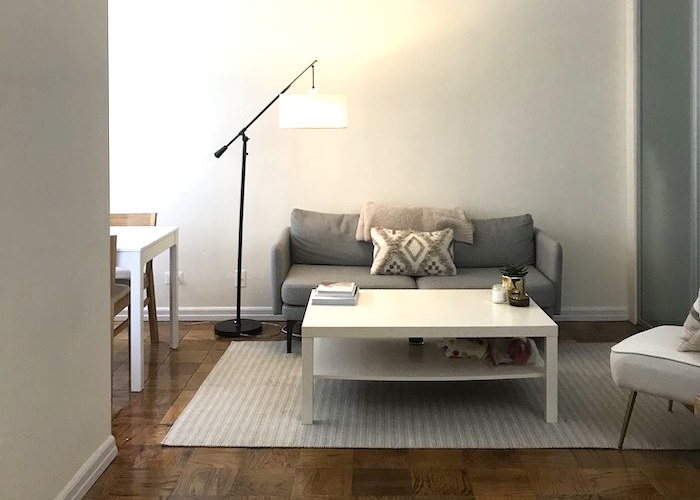How I Spent Over $1,200 Treating My Chronic Migraines

Ever since I was 17 years old, I’ve suffered from intense migraines. In high school, I felt immense internal and external pressure to not only get good grades but also to get an almost-perfect SAT score that would subsequently get me into a world-renowned school (I ended up going to New York University). As bodies usually do, mine reacted terribly to the compound stress.
First, it all started with a headache or two every week. Then, those headaches started happening daily. After a while, I started developing other symptoms, like an aura — a visual disturbance where I saw blue and green dots on one side of my face. I also became incredibly sensitive to the light and any and all noise. My life went on like this for months. To cope with the pain, I mainly took over-the-counter pain medication, since the one I’d been prescribed by a neurologist (which was thankfully fully covered, since I had Medicaid back then) made me really nauseous, which was far more bothersome to put up with (in my opinion).
While my migraines never completely stopped, they were infrequent by the end of that school year. Compared to four or five migraines I got every week for weeks on end, I started only getting two or three a month. So by the time I got to college, I thought my issue with migraines was behind me. I couldn’t have been more wrong. They returned my senior year of college and intensified the following months after graduating. When I got my first full-time job, they were unlike anything I’ve ever experienced. Not only did I feel the same symptoms I did years prior, I was also in a constant state of nausea despite not taking any prescribed medications or eating any food with known allergens that could potentially trigger my digestive system.
It was an agonizing and taxing existence — one that a sizable percentage of the U.S. population knows all too well. According to the Migraine Research Foundation, migraines affect 39 billion men, women, and children in the United States, with American women making up 18% of that number. The Migraine Research Foundation also reports that in 2015, migraine sufferers collectively paid $41 billion on treating their entire range of conditions.
Once it became clear to me that I had a serious issue on my hands that couldn’t be solved with over-the-counter painkillers, I started seeking out professional help for the chronic pain when I was 23 years old. My recovery plan turned out to be a huge expense. Since my mom was unemployed, I had to rely on my employee-backed insurance, which was decent for preventive care but severely lacking for those with chronic health issues like myself. I was also living on a relatively low editorial assistant salary, so the cost of medications and doctor’s visits was overwhelming. Here’s exactly how much my treatment plan costs me for seven months before going freelance and going back on Medicaid which covers all of my medical expenses.
1. Seeing a Neurologist
When I decided enough was enough, my first step of action was making an appointment with a neurologist so they could assess what was going on and recommend treatments for my unique experience with migraines. After plugging in my insurance and my workplace’s zip code in Zocdoc — a site where you can find and book doctor’s appointments in your area. Patients can also leave reviews of their experiences with different doctor’s — I found a neurologist with great reviews from past and present patients, and he was thankfully only one subway stop away from my office. I had a $40 copay for each session. I saw him approximately every three weeks over the course of 7 months, which totaled 10 visits. He prescribed Naproxen to use as needed and a different brand of triptan (a class of drugs for migraines and cluster headaches that soothes overactive pain nerves) than the one I tried back in high school that didn’t sit well with me. He also recommended that I get an MRI to rule out the possibility of a pinched nerve or tumor in my brain. That totaled $325, since I had a deductible to fulfill for my insurance.
2. Medication
I got monthly prescriptions of Naproxen and Rizatriptan, which costs me $18 and change.
3. Emergency Room Visits
One weeknight, I got my worst migraine to date. I couldn’t sleep it off; I could barely turn my head. The left side of my head kept pounding no matter what I did. I wrapped a heated towel around my forehead, took my pain medication, turned off all the lights, and absolutely nothing brought me relief. Frustrated and writhing in pain, I went to the emergency room close by — which, by the way, is the worst place to be when you have an acute migraine. The glaring lights, loud noises, and long wait time only make it worse. A week later, the hospital sent me bill of $150. “What an expensive nightmare,” I said to myself after seeing it. It’s safe to say I haven’t been back to the emergency room again. It’s the absolute last measure for my migraines, considering how much I had to pay just to get some pain relief.
4. Botox
In my initial appointment with my neurologist, he brought up the idea of me getting botox across my forehead, side and back of my neck, and my shoulders for the pain. A lot of his patients saw considerable improvement with their migraines as a result of getting botox, and he thought it would be really helpful for me. A couple of weeks later, we scheduled my first botox session. I’ve gotten botox twice now (and it’s reduced my migraine frequency), and each time I had to pay my usual copayment of $40 for seeing the neurologist, plus $115 for the botox medication (onabotulinumtoxinA) itself. And that’s with insurance — I can’t imagine what the cost would be without it.
Total to date: $1,231
*****
If there’s anything I learned while dealing with my migraines, it’s that healthcare in America is ridiculously expensive and complex to navigate. I wasn’t well-versed in deductibles prior to getting my first full-time job, so I was completely caught off guard when I had to pay upwards of $300 for a MRI. Thankfully, I learned through research that it’s possible to ask your doctor’s office for slight extensions on medical bills (I got an extra three weeks to pay), which made my out-of-pocket expenses easier to manage.
I also discovered that if you are qualified to get botox for your migraines and have to pay a fee to get it administered, you may be eligible for The Botox Savings Program. I found out about it while on the phone with someone from my insurance company when I had to pay for my second round of botox. The customer service representative asked me,“Are you paying with debit or credit, and are you enrolled in the Botox Savings Program?” to which I shrieked and responded, “wait, what is that?” Unbeknownst to me at the time, there was a program that will reimburse you out-of-pocket costs for botox, as long as you’re receiving it for medical purposes, including but not limited to migraines. You just have to make sure to file the necessary paperwork within 90 days of when you got it. I was able to get my money back for the second time I got botox, but not the first, since three months had passed by the time I discovered The Botox Savings Program.
If you’re suffering from migraines, I deeply empathize. Chronic pain is incredibly debilitating and affects all facets of one’s life from your productivity to your relationships with people. Getting help may be costly, but if you have the means, invest in your health. It should be a priority. While botox or my medications haven’t completely rid me of migraines, my life is far more tolerable than it once was. That said, if you’re interested in getting professional help with your own migraines, always consult an empathetic doctor as well as your insurance company to figure out a suitable treatment plan for yourself that’s sustainable and affordable.
Shammara is the editorial assistant at The Financial Diet. When she’s not copy-editing the content for the site or writing about her financial woes, you can find her on Twitter sharing her thoughts on beauty and fashion trends, and pop culture.
Image via Unsplash




